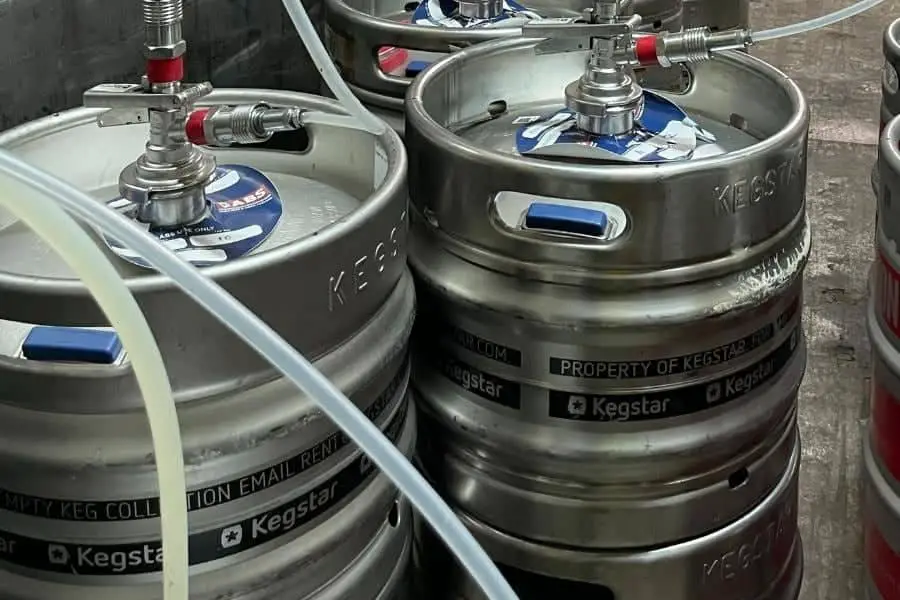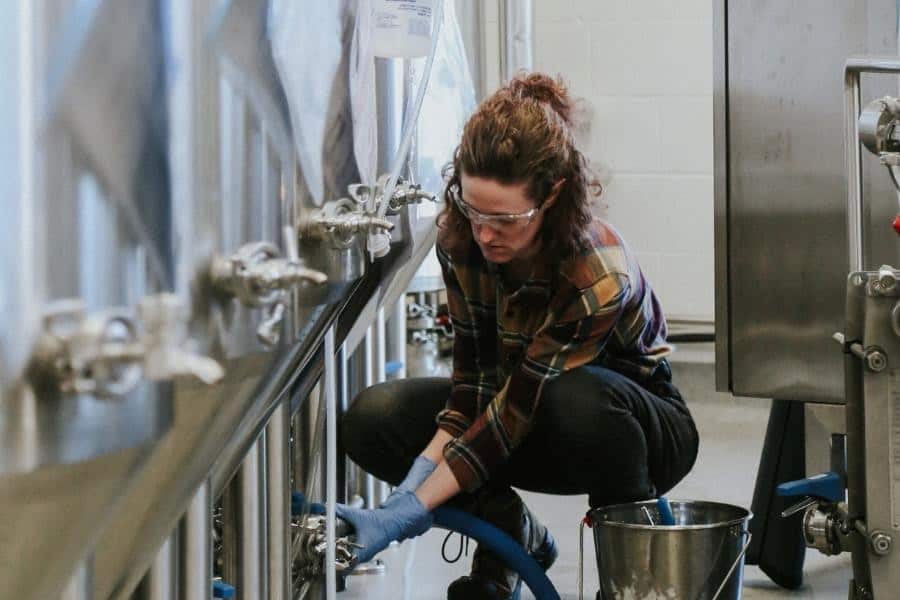If you buy something through a link in our posts, we may get a small share of the sale.
A HERMS brewing system is a great way to upgrade your homebrew setup. It allows for more control over the brewing process and can lead to better-tasting beer. Understanding how to build a HERMS brewing system is a great way to improve your homebrewing skills and make better beer.
Contents
How to Build a HERMS Brewing System
The first step is to choose the right brewing kettle. The size of the brew kettle will be determined by the batch size you want to brew. For instance, you will need a larger kettle for a 10-gallon batch than a 5-gallon batch. The kettle will serve a dual purpose as both the brew kettle and the hot liquor tank (HLT).

The next step is to choose a mash tun. This is where the wort will be mashed and where the starch conversion to sugar will occur. A mash tun can be made from a cooler or a kettle. If you are using a kettle, it must have a false bottom to prevent the grain from getting into the wort. A cooler is easier to use as it comes with a pre-installed false bottom.
The last piece of equipment you will need is a wort chiller. This is used to cool the wort down after the boiling process. In HERMS brewing, the wort is recirculated through the chiller to speed up the cooling process. A counterflow or plate chiller is recommended as they are the most efficient. With these proper types of equipment, you are ready to start brewing.
Step by Step Instructions
Building a HERMS brewing system requires a few extra steps compared to a standard homebrew setup. You don’t want to cut any corners when building your system, as it can lead to problems down the road.
Step 1: Gather the Materials
You will need to have the materials at hand before you start building your HERMS brewing system. The following are some of the materials and their uses:
- A brew kettle: This will serve as both the brew kettle and hot liquor tank.
- A mash tun: This is where the mashing process will take place.
- A wort chiller: This is used to cool the wort after boiling.
- A pump: This is used to circulate the wort during the heating and cooling processes.
- A heat exchanger: This is used to transfer heat from the brew kettle to the mash tun.
- Thermometers: These are used to monitor the temperatures of the wort at various stages of the brewing process.
- A manifold: This is used to distribute the wort evenly throughout the heat exchanger.
- Hoses and fittings: these are used to connect the various parts of the system together.
- A controller (optional): This automates the brewing process.
Step 2: Assemble the Brew Kettle
The first step in building your HERMS system is to assemble the brew kettle. To do this, connect the kettle to the pump using a hose and fittings. Then, connect the heat exchanger to the kettle using another hose and fittings. This will allow the wort to flow from the kettle through the heat exchanger and back into the kettle.

Many brewers like a 50a 240v range for their brew kettle because it can be plugged into a standard outlet and provides plenty of power for brewing. If you have the option, go with a stainless steel kettle because it’s easier to clean and won’t rust.
Also, ensure you use GFCI (ground-fault circuit interrupter) outlets and cords when working with electricity and water. This way, if there is a problem, the power will shut off automatically and prevent any accidents.
Step 3: Assemble the Mash Tun
The next step is to assemble the mash tun. To do this, connect the manifold to the bottom of the tun using a hose and fittings. Then, connect the wort chiller to the manifold using another hose and fittings. This will allow the wort to flow from the tun through the wort chiller and back into the mash tun.
A false bottom is ideal for the tun because it will allow the wort to flow through while keeping the grain in the tun. This is important because you don’t want the grain to clog up the system.
Step 4: Connect the System Together
Now that the brew kettle and the tun are assembled, it’s time to connect the two together. To do this, connect the hose from the tun to the heat exchanger. Then, connect the hose from the heat exchanger to the kettle. This will allow the wort to flow from the tun through the heat exchanger and into the kettle.
Now, connect the controller to the tun and the kettle. This will allow you to automate the brewing process. If you don’t have a controller, you can still brew beer manually.
Ensure to sanitize the equipment before using it. This is important because you don’t want to introduce contaminants into the system. You can use a no-rinse sanitizer since it’s easy to use and won’t leave any residue.
Step 5: Test the System
Now that the system is assembled, it’s time to test it out. To do this, fill the mash tun with water and turn on the pump. Next, turn on the heat exchanger and set it to the desired temperature. The water should flow from the tun, through the heat exchanger, and into the brew kettle.
As the water flows, it will heat up. Once it reaches the desired temperature, turn off the heat exchanger and let the water cool. This will help you ensure the system is working properly and that all the components are compatible.
Now that the system is built and you have tested it, you are ready to brew your first batch of beer! Follow the instructions in your brewing recipe to ensure everything is done correctly. You don’t want to mess up your first batch!

Frequently Asked Questions
How Does a HERMS Brewing System Work?
It relies on a heat exchanger to maintain a consistent temperature in the mash tun while the wort is being transferred to the brew kettle. This allows for better temperature control and prevents the wort from drying out.
How Can I Automate My HERMS Brewing System?
You can use a controller to automate the brewing process. This will allow you to set the temperature and timing of the mash and boil. In fact, many controllers will even turn the system off when the beer is finished brewing. This is a great way to ensure you always have a perfect batch of beer.
What Is the Difference Between RIMS and HERMS?
The difference is that the RIMS system runs the pump continuously and varies the heat source, while the HERMS system only turns on the pump when it’s time to raise or lower the temperature. This makes the HERMS system more efficient and prevents the wort from drying out.
Is a HERMS Brewing System Worth the Investment?
Yes, a HERMS brewing system is definitely worth the investment. It’s a great way to improve the quality of your beer and make the brewing process easier. Plus, it will save you money in the long run because you won’t have to buy as many ingredients. So, if you’re serious about brewing beer, a HERMS system is definitely the way to go.
Conclusion
A HERMS brewing system is a great way to improve the quality of your beer. It’s easy to use and provides better temperature control than other brewing methods. Plus, it’s more efficient as it doesn’t need boiling for a longer time.

